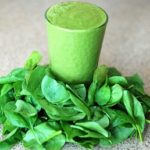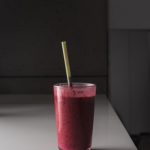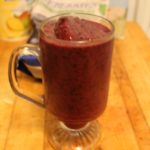There are significant differences between the many forms of kale so it’s important to know which type of kale is best for a smoothie. You don’t want to make the mistake of blending up the wrong type of kale and ending up with a bitter, chunky, or simply undrinkable smoothie.
Kale is super nutritious, and it’s become ubiquitous in the health food industry as a super food. You can read all about the health benefits of kale on any of the hundreds of online health magazines, newspapers, videos, etc… There are dozens of Buzzfeed style pieces published every week attesting to the health benefits of kale smoothie, kale chops, kale this and kale that.
I don’t want to rehash all that. Suffice to say, I agree with the common sense wisdom that kale is good for you and something you should add to your diet. You can juice it, eat it in a salad, make kale chips, or, appropriate to this blog, blend it in a smoothie. However, you want to make sure you’re blending and making smoothies with the best type of kale. Because there are differences.
Tuscan Kale aka Lacianto Kale- Only For Vitamix Smoothies
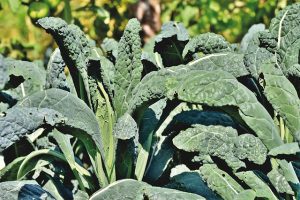
Of all of the mature types of kale, the only one that I recommend making smoothies with is Tuscan kale or Lacianto kale. There are a few reasons for this. First, it’s the easiest one to clean. When you’re making a smoothie, you want to make sure that you are using clean food. Anytime you use a vegetable you want to wash it throughout and make certain that there are no pesticides or residual chemicals on it.
Tuscan kale is hardy and not prone to wilting in the same way as curly kale or red kale. Second, it has less oxalates than the other types of kale. Thirdly, you will often find it cheaper and organic. It is more hardy and resistant to insects, so it doesn’t require the same amount of pesticides.
That said, it’s a tough kale and I’d not recommend it for people who are using a cheap blender such as a a off the shelf model that you find in BJs or Costo or WallMart.
There is a popular myth about kale and oxalates. The myth is centered around people getting sick if they eat kale, but that’s not necessary. The fact is that you would have to eat quite a lot in order to get sick. And there are ways around this. For one, you can quickly steam your kale before eating. That removes some of the acid. If you do that when you’re making kale for lunch or dinner, you can avoid having to do it when it comes time to make a smoothie since I don’t advise steaming before making a smoothie.
Curly Kale

Curly kale is one of the most popular kale’s in supermarkets. It’s what most people think of when they think of kale. The problem with curly kale is that it’s hard to clean. All of the curls can trap dirt, not to mention all of the hard to wash surfaces that need to be cleaned.
Besides that, curly kale is hard to blend up unless you have a Vitamix. While I love the Ninja blender, and it’s a great all around blender, it’s not something that handles adult kale. So, if you try and blend up a green smoothie using curly kale, you’re going to either have bits of kale floating around, or you’re going to have to blend for a really long time. So, skip the curly kale for smoothies and leave it for your kale salads.
Russian Red Kale
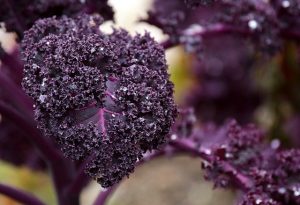
Russian red kale is an interesting type of kale. I like it for salads. I actually prefer it over curly kale for raw salads. Curly kale is good to cook and make into chips. Russian red kale is more tender, and it’s also sweeter.
So, in this aspect, Russian red kale is actually a decent option for green smoothies. Again, though, like other adult kales, you should really make kale smoothies in Vitamix blenders. You can make a Russian red kale smoothie (it’s a bit less tough than tuscan or curly kale). Just do not over stuff the blender with a lot of kale.
Baby Kale and Microgreens
Ideally, you will use a find microgreens to use. These are young, baby kale. They have all of the nutrients of the adult kale, but they are more tender. If you’re planning on making a green kale smoothie, then this is definitely what I recommend.
You can get a big box of kale microgreens at BJs or Costco or even most supermarkets. Just be sure to wash the kale, even if it’s said that it’s already washed. What I always do is rinse it in a salad spinner (if you don’t have a salad spinner, then you really should invest in one).
When you go to make your smoothie, you have a few options as to what to add to it. For instance, you can make it with coconut water and a slice of lemon, or you can add thickeners such as unflavored Greek yogurt.
Some other things you can add to your kale smoothie include:
- Turmeric
- Coconut Oil
- Lemon Peel (whole lemons)
- Beets and Beet Greens
Can You Blend Frozen Kale?
There’s actually a pretty popular product for sale at places like BJs and Costco. It’s a frozen bag of shredded kale and berries, sometimes other fruit. It’s made specifically for blending green kale smoothies.
Wymans of Maine makes a really popular one with Blueberries, Kale, and Bananas. This is what I suggest for people who are just getting started. It’s super easy use, the frozen kale and berries are all already washed, and they are cold (so you don’t have to add ice or worry about a too warm smoothie).
Wymans is my go to choice for buying blueberries, so this product is also high on my recommendation list.
Related Posts

Hi Everyone!
Jenny O’Brien here. Nutritionist & personal trainer. Just your average vegetarian and smoothie fanatic!
If you have any questions, or you’d like me to cover a particular topic, drop me a line and let me know!
Thanks!


